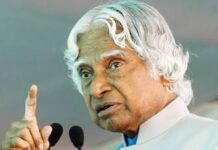The enigmatic nature of time is a puzzle that has intrigued humanity for centuries. We often humorously remark that time ‘flies when we’re having fun’ and seems to ‘crawl’ when we’re in anticipation. These observations hint at the complex interplay between our perceptions and the relentless march of time.
The concept of time, in its grandest sense, has been a subject of contemplation among scholars throughout history. Scientists have endeavoured to unravel its mysteries through mathematical frameworks. However, as we delve into the principles outlined by luminaries such as Newton and Einstein, and explore the intricate world of quantum theory, we may find that a comprehensive understanding of time is not always a prerequisite. Einstein’s theory of relativity, formulated in the early 20th century, revealed time as a dynamic element intimately connected to space, ultimately giving rise to the concept of space-time, the very fabric of the universe. While this scientific perspective provides a sturdy foundation, the profound question remains: what, indeed, is time?”
Isolated on a desolate island, one may contemplate the potential for complete temporal detachment. However, even a figure as iconic as the castaway Robinson Crusoe did not entirely lose touch with the passage of time. This continuity can be ascribed to the intrinsic functioning of the human body’s circadian rhythm, a natural 24-hour cycle.
The human body autonomously responds to fundamental daily necessities, including sustenance for energy and rest for the revitalization of body and mind, even in the absence of a conventional timekeeping device. Although specific responses, such as variations in adrenaline levels and body temperature, may differ among individuals, the internal processes of the body predominantly hinge on one’s personal lifestyle.”
Recent scientific inquiries have unveiled an intriguing revelation concerning time cells harboured within the hippocampus—a cerebral structure shared by both rodents and humans. Researchers, including Lega and associates from the University of Texas Medical South-western Centre, have identified these time cells within the human brain. These enigmatic time cells play a pivotal role in constructing our recollections, encapsulating diverse events and moments within the mesial temporal lobe (MTL) and orchestrating them into ‘episodes.’ The expansion of these episodes inversely correlates with our perception of time, slowing it down. Complementary to time cells, ramping cells, which offer distinct temporal perspectives, may furnish information at slightly differing scales, further enriching our comprehension of time perception.”
In the sphere of non-human mammals, the perception of time unfolds at a distinctly varying cadence. A notable illustration is the commonly cited concept of ‘dog years,’ wherein one human year is purportedly commensurate with seven dog years. The fundamental factors underpinning these divergent temporal perceptions primarily revolve around the animal’s metabolic rate and body mass.
Contemporary research introduces the concept of Critical Flicker Fusion Frequency (C3F), a method elucidating the manner in which mammals process temporal visual stimuli. Smaller creatures, propelled by rapid metabolic rates, exhibit the capacity to discern and process a multitude of events in relatively brief time spans. Conversely, larger creatures like elephants necessitate extended periods for event processing, resulting in a constricted perception of temporal.
There exists a fascinating phenomenon where certain events appear to stretch or contract in duration, irrespective of their actual temporal length. Noted neuroscientist David Eagleman, in collaboration with Vani Pariyadath, embarked on a seminal experiment to elucidate this cognitive enigma. Participants were suspended from a secure 30-meter height while descending, and they were presented with a wrist-worn LED display. This device rapidly alternated between numerical sequences and their mirrored negative images, cycling at a rate of 20 times per second.
This ground-breaking experiment prompted Eagleman and Pariyadath to propose a compelling hypothesis: the observed temporal dilation, where heightened experiences subjectively appear to have lasted longer, could be attributed to a memory-related mechanism.
When faced with intense situations, the human brain exhibits a remarkable proclivity to absorb and preserve sensory details, thus forming a more intricate and vivid memory. This memory enrichment phenomenon, they conjectured, elucidates why these experiences subjectively appear to extend beyond their objective temporal reality.( Source : New Scientist Essential Guide’ , Volume 18, Page 58),
In another study with 20 participants averaging 21 years of age, each observed a circle on a screen at varying time intervals, ranging from 250 to 350 milliseconds. Significantly, the Supramarginal Gyrus (SMG), a region associated with diverse cognitive functions, played a pivotal role in subjectively extending the perceived duration of the visual stimulus. This phenomenon held true across both experiments, shedding light on the intriguing ways in which the SMG influences our perception of time.
The theory of “embodied cognition” advocates that we experience everything through physical sensations, including our perception of time. Our bodies inherently operate on rhythms, from the pulsing of the heart to the pangs of hunger, contributing to the brain’s grasp of temporal passage. Marc Wittmann, a proponent of this theory, observed that heightened bodily awareness tends to stretch our sense of time, implying that the more attention we pay to our physical sensations, the slower time appears to pass.
As we delve into the intricacies of time perception, the pivotal roles played by natural light and darkness in our lives emerge. The sun’s cadence and our circadian rhythms lie at the heart of temporal understanding. In today’s urban landscapes, the encroaching menace of light pollution often goes unnoticed.
Artificial lights disrupt our sleep, unsettling our circadian rhythms. Scientific wisdom underscores the profound impact of natural light on our physical and mental well-being. So, we must contemplate: In our relentless pursuit of progress, have we forsaken our connection to natural timekeepers and the sanctity of day and night?
By: Pratibhas Chaudhury
Write and Win: Participate in Creative writing Contest & International Essay Contest and win fabulous prizes.
















